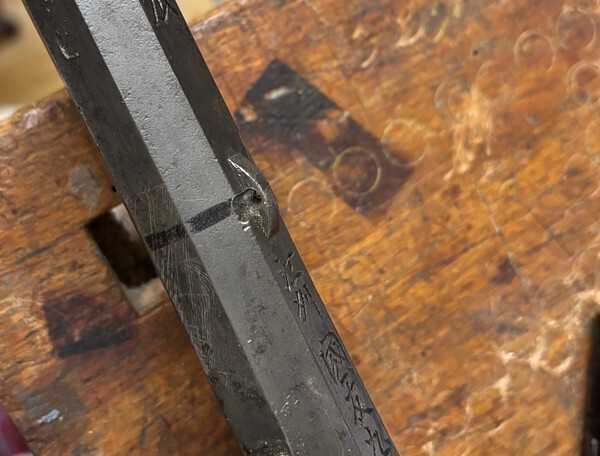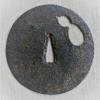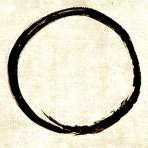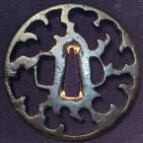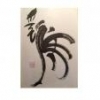All Activity
- Past hour
-
Hello all, I received this Mumei Tanto today! It was listed as "old koto era" I want to believe it to be authentic BUT I don't know a lot about much, so ANY help identifying anything about the blade will be greatly appreciated! Taking photos were ALOT harder than i imagined they would be, so, my apologies for the lack of detail in the images. Thanks, Justin.
-
- 1
-

-
Its utter junk. By the looks its from jauce
-
A quick update, next on the list was the 4 barrel lugs of which only one actually aligned properly with the stock holes, another factor which made me think it is a composite gun. The aligned one I left alone (1st pic). One of the others was partially detached so I could see that they were soldered into slots cut into the barrel. I therefore used the same method for the three new lugs in their proper positions. Now I need to finish honing out the bore and prep it for a reblue.
-
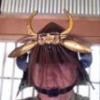
Help identifying inscription on tang
Bugyotsuji replied to GyRider's topic in Translation Assistance
That’s better. I completely missed the two down strokes of 利 way over near the edge on the right! Thanks! - Today
-
Matsunoki started following What am I ?
-
What are the metal mounts made from? Silver or shibuichi? No doubt its Meiji in my mind but by no means a piece of junk “for people who don’t know any better” Many people collect these Meiji works and I’m guessing this would fetch a couple of thousand £ in just about any auction. Considerable work has gone into the lacquer work and if the mounts are silver or shibuichi then it would have been expensive when first made. To cast those mounts, hand finish them, fit to a custom made saya etc exhibit considerable skills, possibly made by some of those who lost their lively hoods when the sword ban came in and the Samurai faded from history. OK not one for the purist collector of Nihonto but then horses for courses.
-
See above. Mal has it.
-
There is an interesting profile on the blade, after the groove it has a very gentle radial curve here the spine goes from ~.8cm to ~.5cm
-
Indeed Arnaud, it is quite a thin Tsuba (2,8 mm). Nakago Ana is 3 cm. But 7 cm is not a large Tsuba... (I made a picture of it next to a Kunihiro Tsuba who is 5,8 mm thick.)
-
The sugata should tell you if this sword is Ichimonji or not... Shobu- zukuri = ? Nakago jiri is not Kaga.
-
Thank you Markus for all the work you do for the community! What the data doesn´t show is that the NBTHK can sometimes be a little bit mean. Take session 707: 4 blades by Rai Kunimitsu and a Uda Kunifusa with a Rai Kunimitsu utsushi.
-
Softmetal part: 1. 160€ 2. 135€ 3. 140€ 4. 100€ 5. 85€ 6. 110€ Iron part: 7. 80€ 8. 75€ 9. 90€ 10. 85€ 11. 90€ 12. 100€
-
Looks gimei to me. Ichi is lightly chiseled and it's not usually just a straight line. Probably the easiest Mei to fake.......
-
...no evidence of suriage for me, maybe little maki okuri ?
-
Based on nagako? The Hamon looks different from what I’ve seen of kiyomitso any factors I can look into or better photos I can reference? thank you -sam
-
Need help dating a rare blade and mountings | Niō Kiyotsuna
lonely panet replied to GarnerWall's topic in Nihonto
Hey lets look at what sold the sword. Nice koshirae. The rest of the story about the family and past owners. Seems abit far fetched -
interesting, if so I wonder when the signature was added, it seems to have a similar color under it but it could have been accelerated rusting I am not familiar with the techniques
-
Tosho-style. Sorry to say, I recognize a lack of precision in execution (the shape of nakago ana for instance) for giving the impression of an older piece.
-
Hi Justin, I agree that it is an original from Edo period, however difficult to ascertain to a specific school or smith. The condition, too, isn’t the best. As Dale suggested try to restore the rusty areas with antler or bone. Nice contrast in between the iron surface and soft metals, copper, brass, silver and shibuichi for the rat. It seems that the patination of the rat is partially rubbed off. Sometimes after many years it might restore by itself. Nice find anyhow! Any dimensions?
-
There are quite a few suguha Ichimonji, which are .... to kantei. This however does not look like it. It feels like a Muromachi piece, possibly earlyish to mid. These are hard to judge, but I would pivot towards a particularly good example of Fuyuhiro. P.S. I just noticed the nakago. Come one, this is Kaga Kiyomitsu. Not too far from Fuyyhiro though.
-
Do you think the signature is gimei? based on Hamon/hada/shape
-
@Iaido dude Kazunari Nariki made several variants of each specific tsuba style he was recreating. He would then pick the one he liked the most and submit it for the modern tsuba makers competition in Japan (I forget the name, sorry). He also traveled to collect the correct sand iron form the specific region each tsuba type was from, so he could get the same surface colour and features after he smelted the sand iron in a tatara. I have three of his pieces and got outbid on a couple others. I really admire what he was able to achieve, and his dedication to the craft, and to tsuba appreciation in general.
-
That's a great example of a high quality nanban piece. Getting a signed one is quite rare. Congrats! You might find this article on signed Nanban tsuba interesting: Signed "nanban tsuba" | Mandarin Mansion
-
Well if you dont want it. Ill take it hahahaha
-
Seki ju nin Takeyama Yoshinao saku. Sho stamp. YOSHINAO 義尚: real name Takeyama Tsutomu (武山勲). Born Meiji 39 (1906) August 17, older brother of Yoshitomi (義臣). Reg. Showa 14 (1939) October 27 (age 33). Rikugun-jumei-tōshō. Died Showa 57 (1982) July 11. Akihide 1942: Jōkō no retsu (5/7). Second Seat at 6th Shinsakuto 1941). Example mei: (“Seki Fujiwara Yoshinao”) (“Noshu Seki Takeyama Yoshinao saku” SHO), (“Seki Fujiwara Yoshinao saku” SHO), (“Seki Fujiwara Yoshinao saku kore”) (“Noshu ju Takeyama Yoshinao kin saku”) (“Noshu Seki ju nin Takeyama Yoshinao kin saku” SEKI).
-
@Curran those are two great tsuba. Congrats and thanks for sharing.







